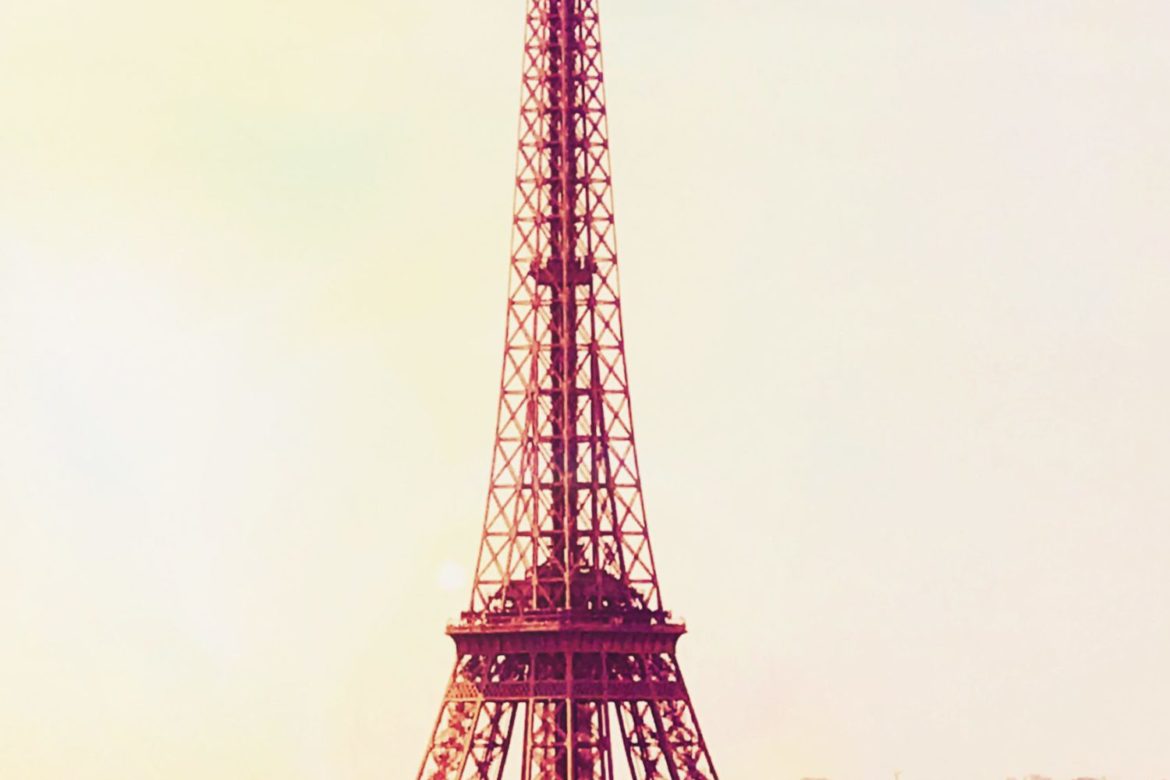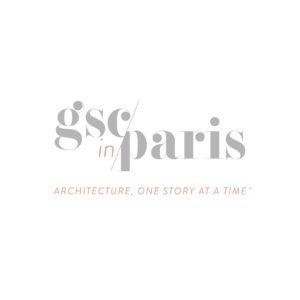
What’s so great about the Eiffel Tower anyway?
Starting at the Rond Point de Champs-Elysees, we turned down Avenue Kléber and headed toward Trocadéro. I knew this would be the best and most impressive way to see the Eiffel Tower for the first time. I knew this because I lived in Paris for 6 years and have visited many times since. But for my husband, this was his first time to Paris and I wanted every image, every moment to be as memorable as possible. We travelled down one of the rays of the “Etoile”, and as we first arrived in place de Trocadéro and the tower is still hidden from view. You know you are on the right course though with the absolute swarms of people and cheesy trinket vendors and street food carts. There are two large buildings that flank the plaza – the Palais de Chaillot and the Musee de l’Homme. Walk between the two, and there it is there, perfectly framed, magnificent, iconic and beautiful. I heard my husband gasp. No matter how many times I have seen that iron beauty, I am always overwhelmed.
We maneuvered through the throngs of tourists, drifting through the cloud of numerous languages floating in the air. We made it to the security fence that on that visit prevented tourists from walking down the stairs at the Trocadéro. We took pictures and took time to take in its beauty. A man stood on the other side of my husband. He was from the other side of the world, not American. He said, “What’s so great about the Eiffel Tower, anyway?” This man could have asked any other tourist and probably would have gotten a perplexed look or a shoulder shrug. But he asked me.
What is so great about the Eiffel Tower and why is it so special? At the end of the 1700’s, with the Enlightenment and an emphasis on science and engineering, the French bifurcated the role of Engineer and essentially invented the professional role of the Architect. Meanwhile, they were at the forefront of developing new building materials that would create the possibility of high rises. At one point, the gentleman posing the question, mentioned the skyline of Shanghai and Dubai as much more impressive, with their records for the highest buildings in the world. However, without the development of wrought iron as a viable and crucial building material, there would be no Shanghai or Dubai.
The Eiffel Tower was not designed to be the icon of Paris. The intent of Mr. Eiffel was not to lead to a Paris full of key chains, t-shirts and placemats emblazoned with the edifice that once held the record for the tallest manmade structure in the world. His intent was to showcase, at the 1889 World’s Fair, the invention of wrought iron and its incredible applications to architecture. Buildings could go high and walls could open up as beams spanned longer distances, eliminating the need for so many columns.
The building was fiercely loathed by the art community, who felt it was a terrible eyesore on their lovely cityscape. Here, an extract from “The Protest against the Tower of Monsieur Eiffel”, the art community writes:
“…We come, we writers, painters, sculptors, architects, lovers of the beauty of Paris which was until now intact, to protest with all our strength and all our indignation, in the name of the underestimated taste of the French, in the name of French art and history under threat, against the erection in the very heart of our capital, of the useless and monstrous Eiffel Tower which popular ill-feeling, so often an arbiter of good sense and justice, has already been christened the Tower of Babel. (…) Is the City of Paris any longer to associate itself with the baroque and mercantile fancies of a builder of machines, thereby making itself irreparably ugly and bringing dishonour? (…)
To comprehend what we are arguing one only needs to imagine for a moment a tower of ridiculous vertiginous height dominating Paris, just like a gigantic black factory chimney, its barbarous mass overwhelming and humiliating all our monuments and belittling our works of architecture, which will just disappear before this stupefying folly.
And for twenty years we shall see spreading across the whole city, a city shimmering with the genius of so many centuries, we shall see spreading like an ink stain, the odious shadow of this odious column of bolted metal….”
Maybe the tourist I met, who questioned the importance of the Eiffel Tower, was identifying with these late 19th century artists. But eventually the artists came around, because by 1912, it was celebrated as the icon it has become today. Maybe if those tourists, making a long journey to Paris, would read a bit about the history of this monument, they might not be so quick to judge.
Looking to stay in the city of lights? I highly recommend booking through VRBO. Staying in a Parisian apartment allows you to experience Paris as a true Parisian! Click on this link here for specific Paris rental deals.
[ctct form=”673″]



Leave a Reply